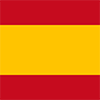The Island of Death of Ikšķile and the tragic history of that former Latvian peninsula
In the world there are very beautiful places but whose past makes them burdened with an air that carries them with sadness.
One of them is Ikšķile, one of the oldest populated places in present-day Latvia, located a few kilometers southeast of Riga, the capital of that small country. During the World War I, when Latvia was still a possession of the Russian Empire, very tough fighting took place in this area between German troops and two battalions formed by Latvian soldiers: the 2nd Riga Latvian Rifle Battalion and the 3rd Kurzeme Latvian Rifle Battalion.

The two Latvian battalions were stationed in a fortification on a peninsula on the left bank of the Daugava River. In the summer of 1916 came one of the hardest moments of the war in that area. The Latvian riflemen were subjected to constant artillery fire by the Germans, but they managed to resist in that position, demonstrating a courage that would make them famous.

Finally, in the early hours of September 25, 1916, the Germans attacked the Latvian position using phosgene, a poisonous gas that was released from nine different points. The Latvian soldiers heard the emission of that poisonous gas like a deadly whistle advancing towards them. The phosgene attack surprised many Latvian soldiers while they were sleeping. Many did not manage to put on their anti-gas equipment in time and others did so in a disorderly manner.

Among the first symptoms of poisoning (coughing and watery eyes), the Latvian soldiers managed to repel up to three German attacks with gunfire throughout that tragic night. Finally, the poison had its effect: 240 Latvian soldiers died because of the phosgene and another 16 in the fighting against the Germans. According to the website Latviesustrelniekusaraksts.lv, 881 Latvian defenders needed care medical due to poisonous gas.

After the independence of Latvia in 1918, the new Latvian government decided to erect a monument to the defenders of Ikšķile. This monument was inaugurated on July 27, 1924: a sober monolith that rose towards the sky on that peninsula where so many brave Latvians had fallen defending their land. That sacred place for Latvians changed forever 50 years later, in 1974, when the Riga hydroelectric power station was inaugurated. The old peninsula ended up becoming an island.

Today, that island is known in Latvia as "Nāves Sala", the Island of Death. The monument erected in 1924 still stands there in memory of those Latvian soldiers who fell in 1916. Today, the island still preserves some remains of the old fortifications from that battle and some graves of its fallen, very lonely, since now it is not easy to access it, since the island lacks bridges. You can see here a video with aerial images of this island published by Dimidrone :
---
Main photo: Edgars Šulcs.
|
Don't miss the news and content that interest you. Receive the free daily newsletter in your email: Click here to subscribe |
- Lo más leído
- A British fairytale ruin: the abandoned shoe house on the Isle of Wight
- The interior of the Statue of Liberty torch and the sabotage that canceled its visits
- The supermassive black hole of Phoenix A, the biggest known light-devouring monster
- A virtual tour of ancient Rome in full color, just as it was in its heyday
- The unknown Soviet female cosmonaut who died on a mission: history or hoax?
- A large collection of Volkswagen cars hidden in an abandoned mine in Switzerland
- An old Soviet military plane abandoned from 1971 on a Russian island near Alaska

 ES
ES





Opina sobre esta entrada: